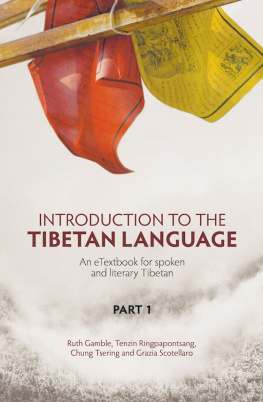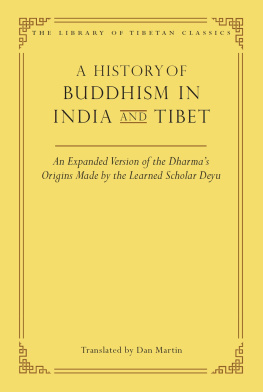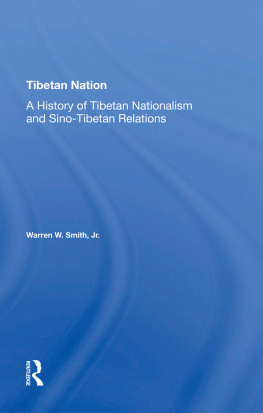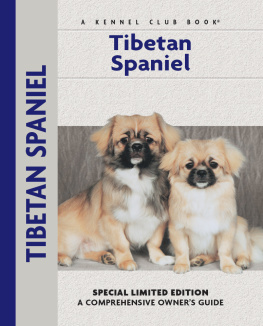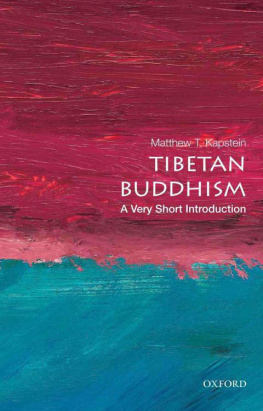T HE L IFE OF B UDDHA
This classic volume from Trubners Oriental Series introduced Western readers to the vast Buddhist literature on Tibet. It focuses on the life of the Buddha and the early history of his order, and includes the first translation of many key works. Tibetan Buddhist texts differ in important ways from sources translated from Pali or Chinese, and this volume is essential reading for all those interested in Tibetan Buddhism and oriental philosophy and religion generally. The first part of the book consists of the translation and analysis of the Tibetan Dulva or Vinaya-pitaka, and the second part includes chapters on the early history of Tibet and Khosan and an index of Tibetan words with their Sanskrit equivalents.
The author, William Woodville Rockhill, (1854-1914) was a scholar-diplomat, linguist, ethnologist and Tibetan expert who was the first American to speak, read and write Tibetan, and the first to explore the Tibetan highlands, where he traveled extensively. Later American Minister to China, he was an authority on Buddhism and a friend of the thirteenth Dalai Lama. His collection of Tibetan manuscripts, including those consulted for this volume, became the core of the Tibetan holdings in the Library of Congress.
First published in 2007 by
Kegan Paul International
This edition first published in 2011 by
Routledge
2 Park Square, Milton Park, Abingdon, Oxon, OX14 4RN
Simultaneously published in the USA and Canada
by Routledge
711 Third Avenue, New York, NY 10017
Routledge is an imprint of the Taylor & Francis Group, an informa business
Kegan Paul, 2007
All rights reserved. No part of this book may be reprinted or reproduced or utilised in any form or by any electronic, mechanical, or other means, now known or hereafter invented, including photocopying and recording, or in any information storage or retrieval system, without permission in writing from the publishers.
British Library Cataloguing in Publication Data
A catalogue record for this book is available from the British Library
ISBN 10: 0-7103-1195-8 (hbk)
ISBN 13: 978-0-7103-1195-5 (hbk)
Publishers Note
The publisher has gone to great lengths to ensure the quality of this reprint but points out that some imperfections in the original copies may be apparent. The publisher has made every effort to contact original copyright holders and would welcome correspondence from those they have been unable to trace.
INTRODUCTION.
A NY one who has glanced at the analysis of the Tibetan Bkah-hgyur by Alexander Csoma de Krs, published in the 20th volume of the Asiatic Researches, must have been struck with the wonderful patience and perseverance of this extraordinary scholar. Some idea of the extent of the researches which are embodied in his analysis of the Dulva, about the tenth part of the whole Bkah-hgyur, may be had when it is known that it occupies more than 4000 leaves of seven lines to the page, each line averaging twenty-two syllables. But notwithstanding all that Csoma did to make known to Europe the vast Buddhist literature of Tibet, his work is hardly more than an index of the Tibetan Tripiaka. Moreover, when he wrote it, Buddhist studies were in their infancy, and many important subjects on which the Bkah-hgyur furnishes answers, which, if not always acceptable, are still plausible and interesting, had not been investigated by scholars, and their importance was as yet ignored.
Csomas premature death prevented him examining as fully as we could have desired the Tibetan Bstan-hgyur, in which may be found many important works which help to elucidate the difficulties which so frequently beset the canonical works in the Bkah-hgyur.
From what has been said we may safely assert that it is not impossible to extend the analysis of the Bkah-hgyur far beyond the limits reached by Csoma. So numerous, however, are the materials which are supplied us, that it is beyond the power of any one scholar to examine them in their entirety, and he must necessarily confine himself to one special subject or branch of research.
In the first part of this work we have endeavoured to give a substantial and connected analysis, and frequently literal translations, of the greater part of the historical or legendary texts contained in the Tibetan Dulva or Vinaya-piaka, which is unquestionably the most trustworthy, and probably the oldest portion of the Bkah-hgyur.
By frequent reference to the pages of the original (the East India Office copy of the Bkah-hgyur), we hope we will have facilitated researches in the cumbrous Tibetan volumes, to which no indices are attached.
Some of the passages of this volume have been analysed by Anton Schiefner in his Tibetische Libensbescriebung akyamuni (St. Petersburg, 1849), but as the work from which he translated them was composed by a Tibetan lama of the seventeenth century, it could hardly be considered as authoritative, and it has been thought advisable not to omit these documents in their original Tibetan form.
The Tibetan Vinaya (Dulva) is not solely devoted to recording the rules and regulations of the Buddhist order, as is the Pli work of this name, but it contains jtakas,which is intended to give an idea of the Tibetan Vinaya literature.
By comparing the following notes on the life of the Buddha with other works on the same subject, but derived from different sources, it will be seen that two periods of the life of Gautama are narrated by all Buddhist authors in about the same terms (probably because they all drew from the same source their information), the history of his life down to his visit to Kapilavastu in the early part of his ministry, and that of the last year of his life. All the events which occurred between these two periods are with difficulty assigned to any particular year of his life, and we have been obliged to avail ourselves of any incidental remarks in the texts for arranging our narrative in even a semi-chronological order. Thus the oft-recurring phrase that Adjatasatru was king of Magadha when such and such an event took place, suggested the idea of taking the commencement of his reign (five or eight years before the Buddhas death) as a dividing-point in the Buddhas life, and of putting in the same chapter all the texts which are prefaced with this remark.
The histories of the councils of Rjagriha and of Vaisali. contained in the eleventh volume of the Dulva, are here translated for the first time, and they differ in many respects from the versions of these events previously translated from Pli or Chinese.
The authenticity of the council of Rjagriha has been doubted on insufficient grounds, and, without examining the merits of the case, we cannot help thinking that it was much more rational that a compilation or collation of the utterances of the Master and of the rules of the order should have been made shortly after his death, than that his followers, however united they may have been, should have allowed a century to elapse before fixing in any definite shape the sacred words and ordinances. Moreover, both Pli and Tibetan works only credit the council of Vaisali with having settled some unimportant questions of discipline, and do not mention any revision of the sacred works performed by this synod.



